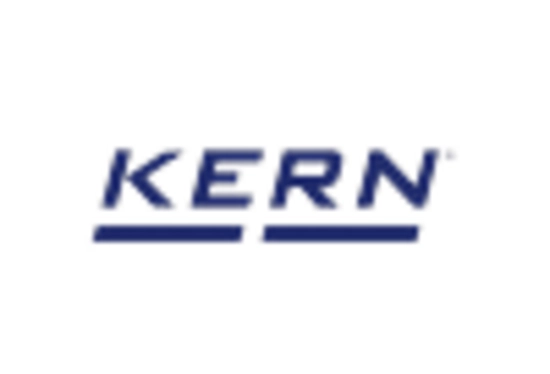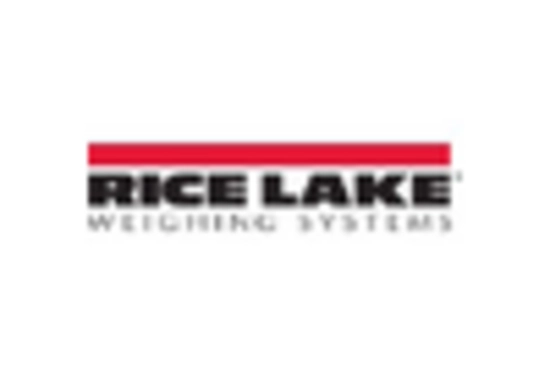The Weighing Terminal Market is currently characterized by a dynamic competitive landscape, driven by technological advancements and increasing demand for precision in various industries. Key players such as Mettler Toledo (Switzerland), Siemens (Germany), and Sartorius (Germany) are at the forefront, each adopting distinct strategies to enhance their market positioning. Mettler Toledo (Switzerland) focuses on innovation, particularly in the development of advanced weighing solutions that integrate seamlessly with digital platforms. Siemens (Germany), on the other hand, emphasizes digital transformation, leveraging IoT technologies to enhance operational efficiency and data analytics capabilities. Sartorius (Germany) is strategically expanding its product portfolio through targeted acquisitions, thereby strengthening its foothold in the biopharmaceutical sector. Collectively, these strategies not only enhance their competitive edge but also contribute to a rapidly evolving market environment.
In terms of business tactics, companies are increasingly localizing manufacturing to reduce lead times and optimize supply chains. This approach appears to be particularly effective in a moderately fragmented market, where the collective influence of key players shapes pricing strategies and product offerings. The competitive structure is characterized by a mix of established firms and emerging players, each vying for market share through innovation and customer-centric solutions.
In August 2025, Mettler Toledo (Switzerland) announced the launch of a new line of smart weighing terminals designed for the food and beverage industry. This strategic move is significant as it not only addresses the growing demand for compliance with food safety regulations but also enhances operational efficiency through real-time data monitoring. Such innovations are likely to position Mettler Toledo as a leader in this niche market segment.
In July 2025, Siemens (Germany) unveiled its latest IoT-enabled weighing solutions, aimed at optimizing supply chain processes for manufacturing industries. This initiative underscores Siemens' commitment to digital transformation, as it integrates advanced analytics and machine learning capabilities into its weighing systems. The strategic importance of this development lies in its potential to significantly reduce operational costs and improve decision-making processes for clients.
In September 2025, Sartorius (Germany) completed the acquisition of a leading software company specializing in data management solutions for laboratory weighing systems. This acquisition is pivotal as it enhances Sartorius' ability to offer comprehensive solutions that combine hardware and software, thereby catering to the increasing demand for integrated systems in the biopharmaceutical sector. This strategic action is expected to bolster Sartorius' competitive position in a rapidly evolving market.
As of October 2025, the Weighing Terminal Market is witnessing trends such as digitalization, sustainability, and the integration of artificial intelligence. These trends are reshaping competitive dynamics, with strategic alliances becoming increasingly prevalent as companies seek to leverage complementary strengths. The shift from price-based competition to a focus on innovation, technology, and supply chain reliability is evident, suggesting that future competitive differentiation will hinge on the ability to deliver advanced, integrated solutions that meet the evolving needs of diverse industries.


















Leave a Comment